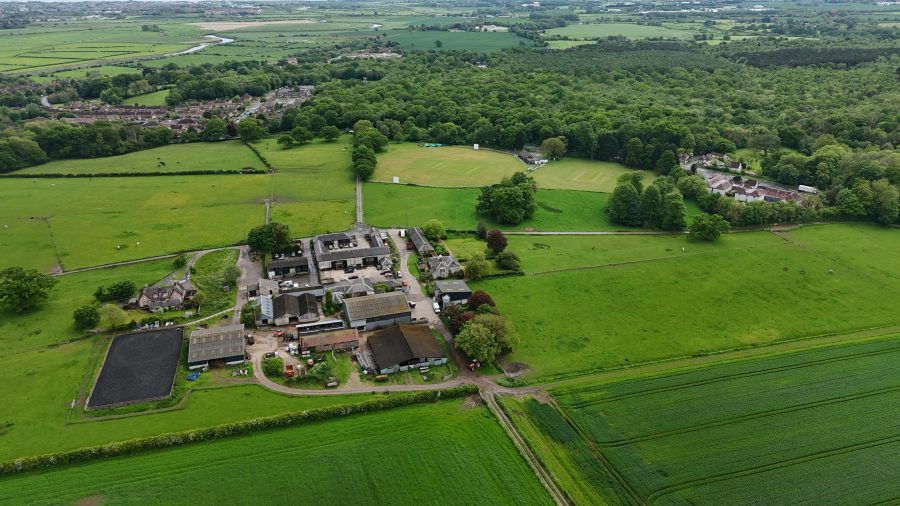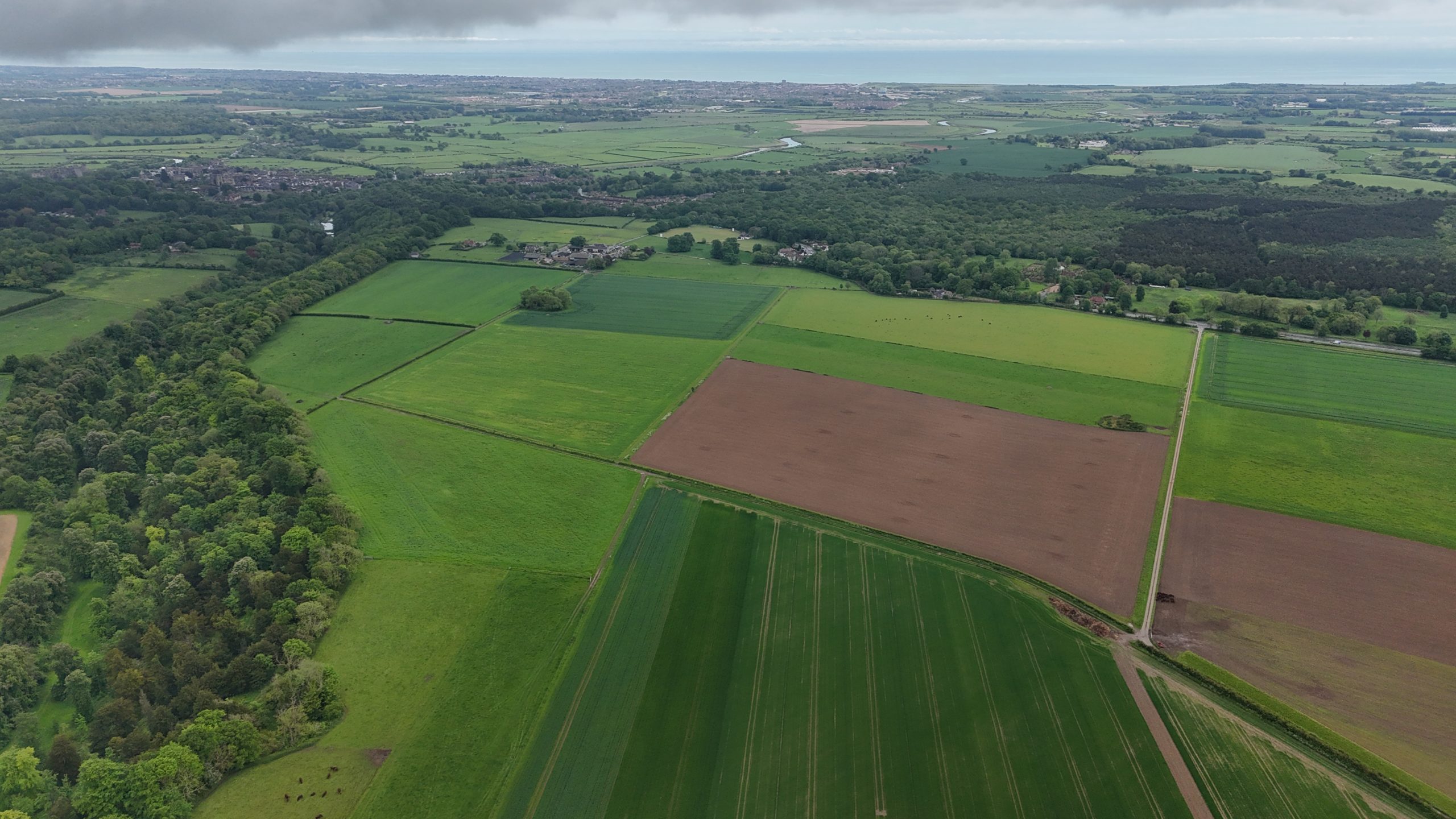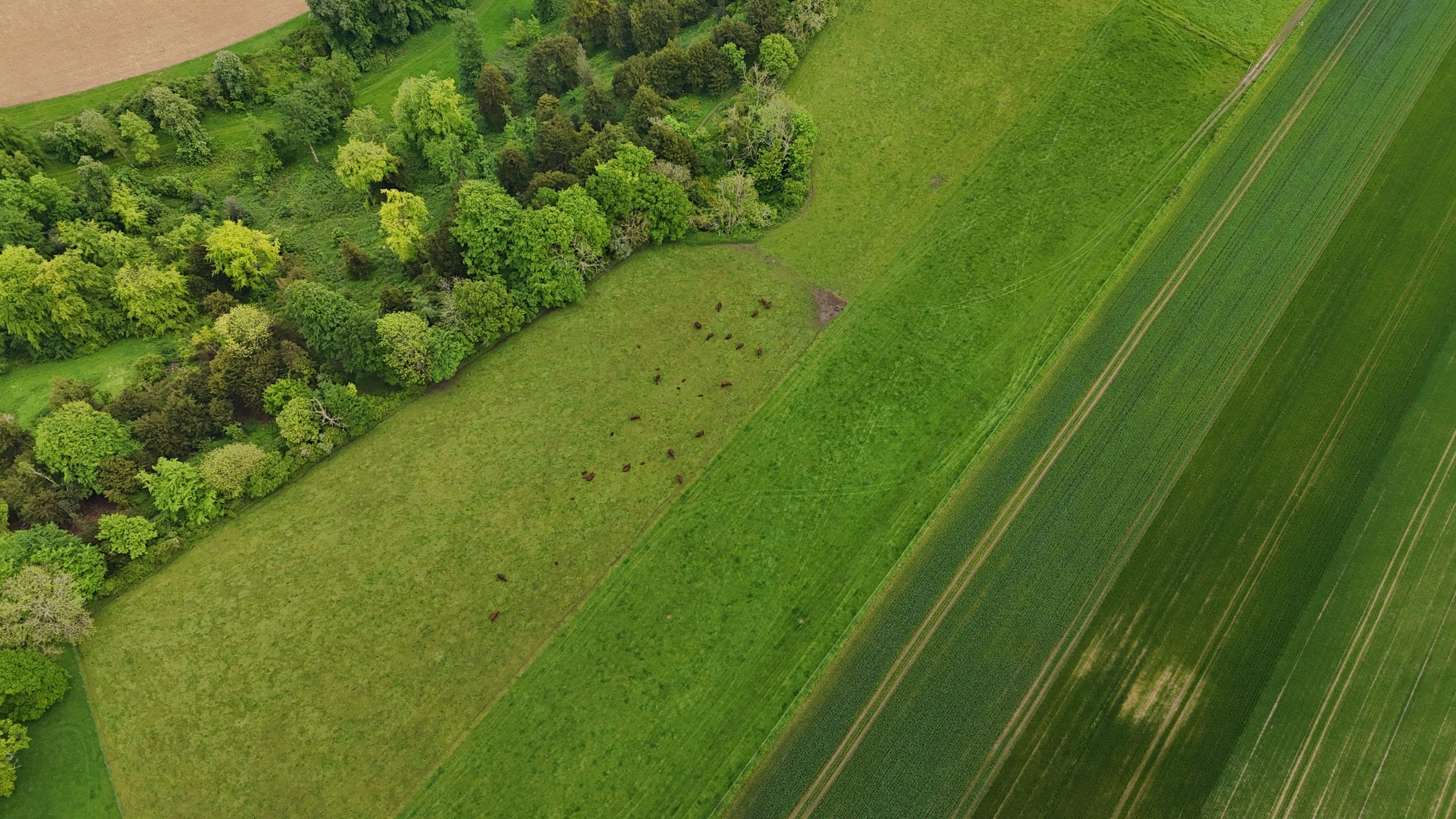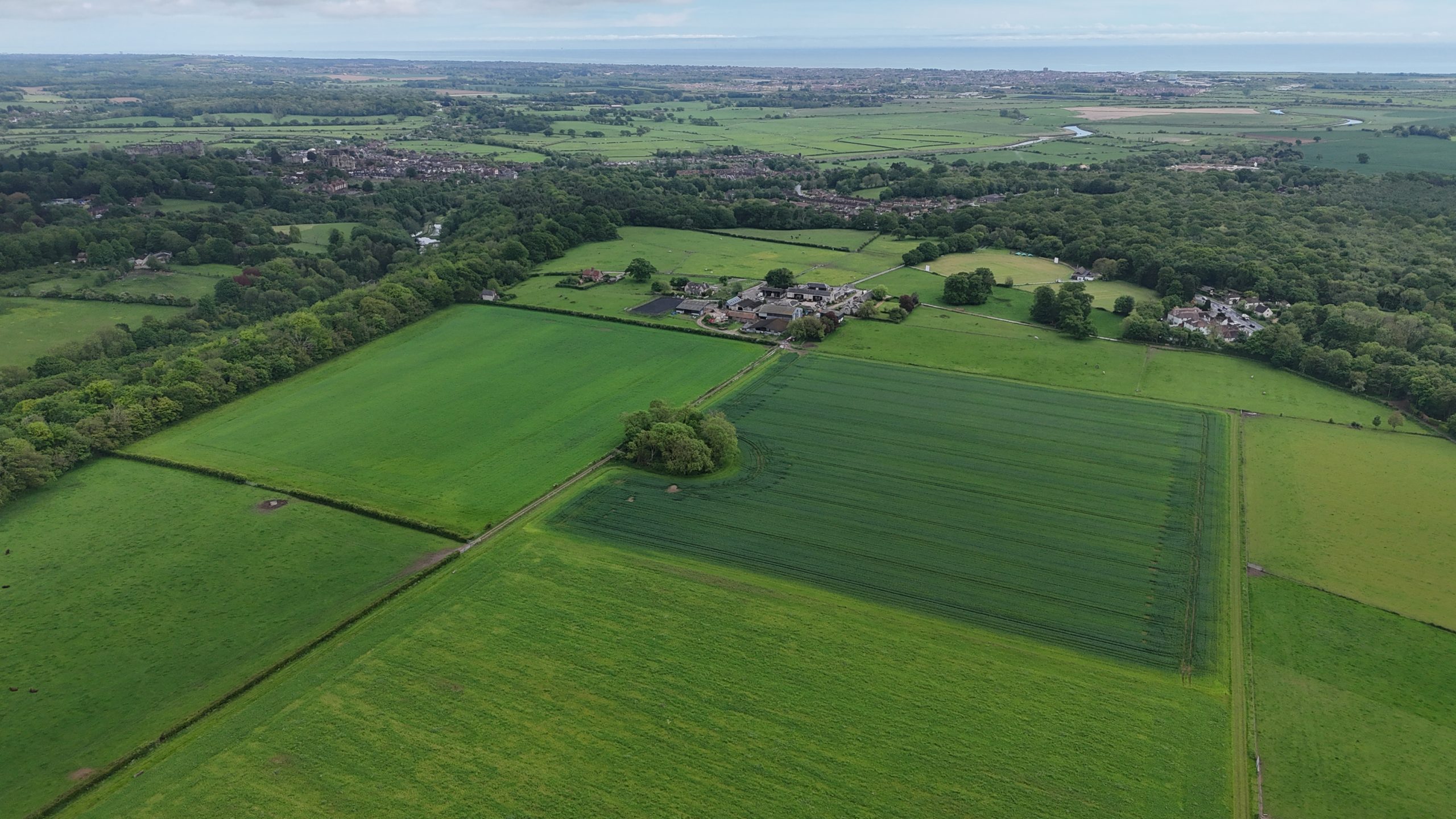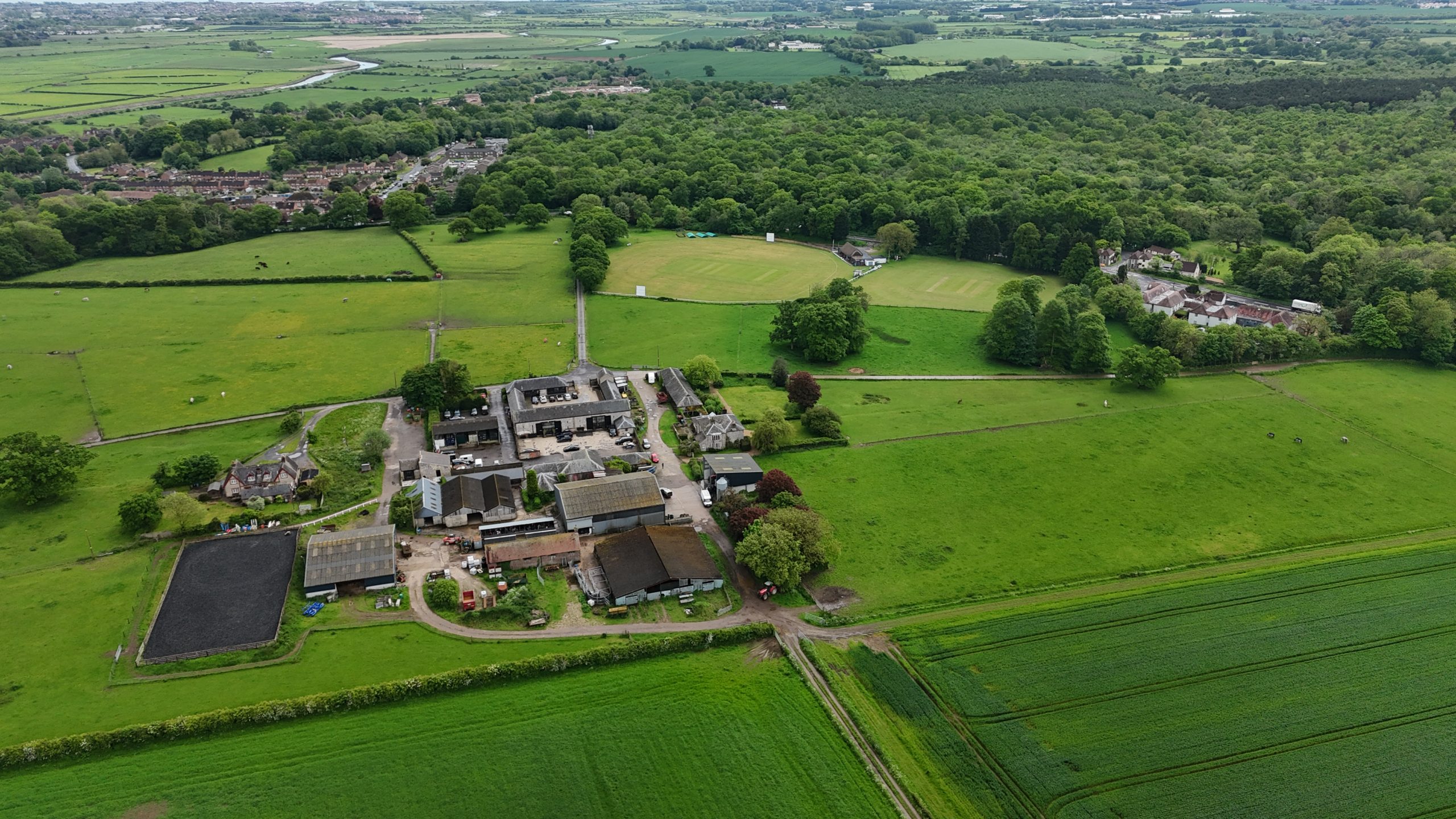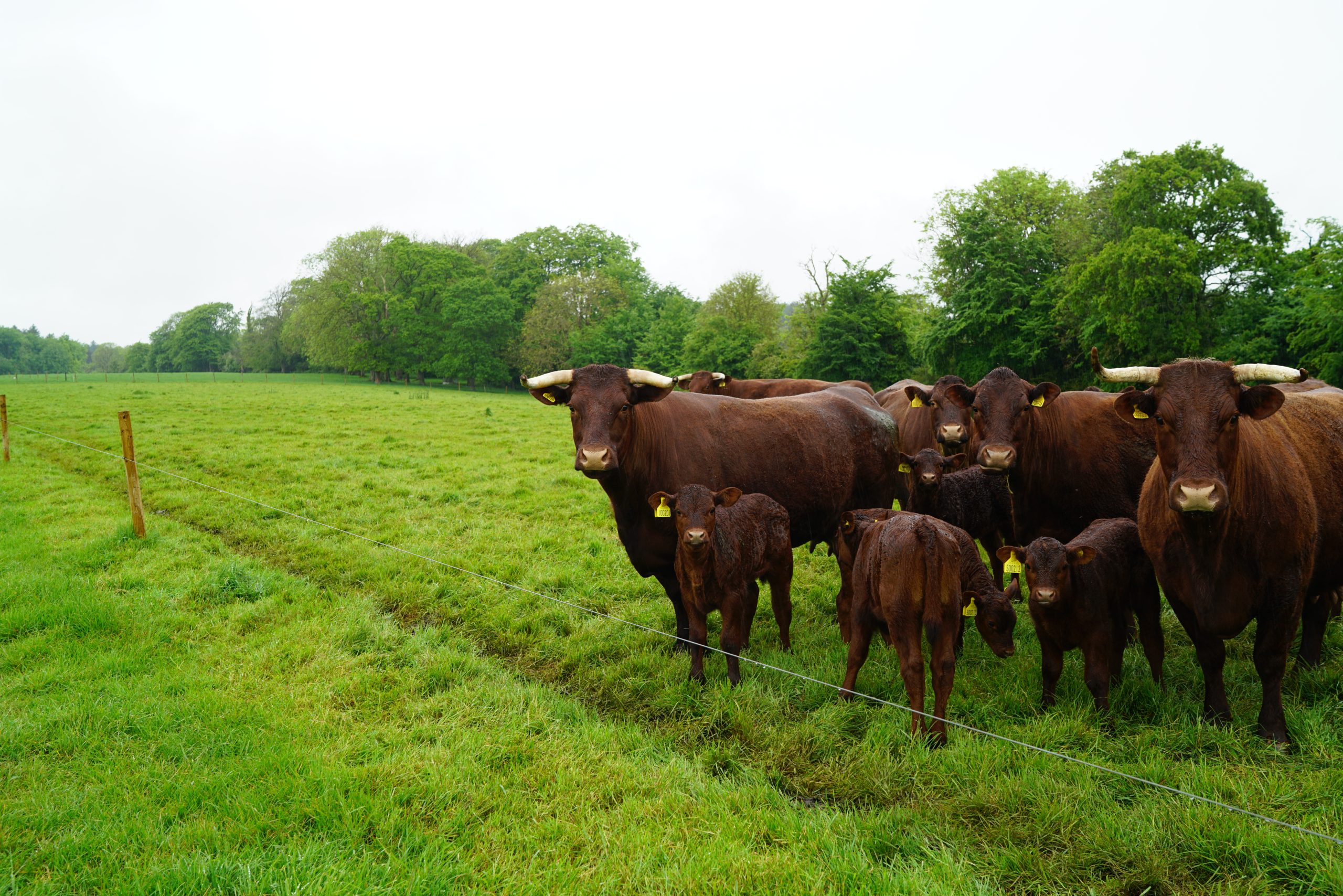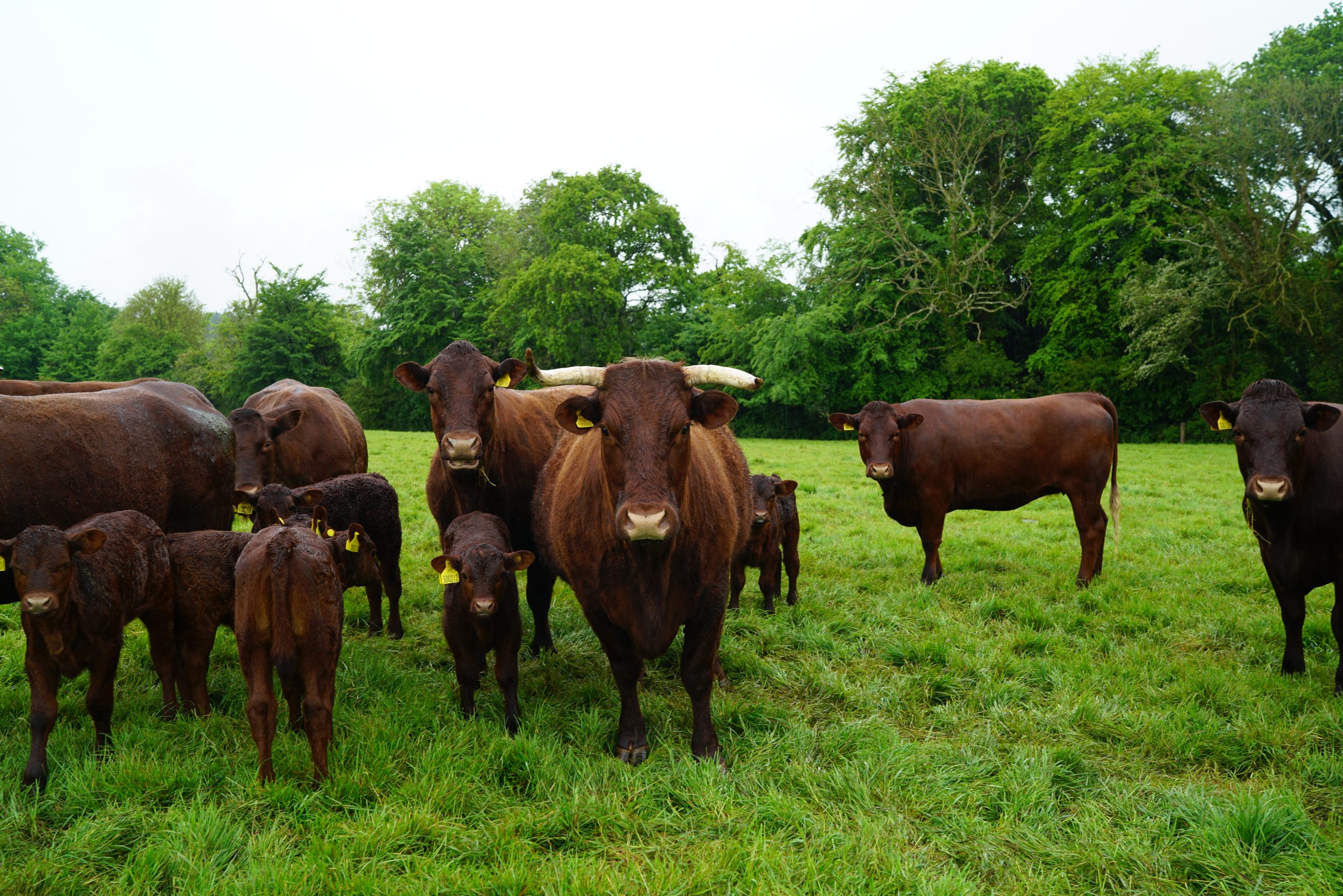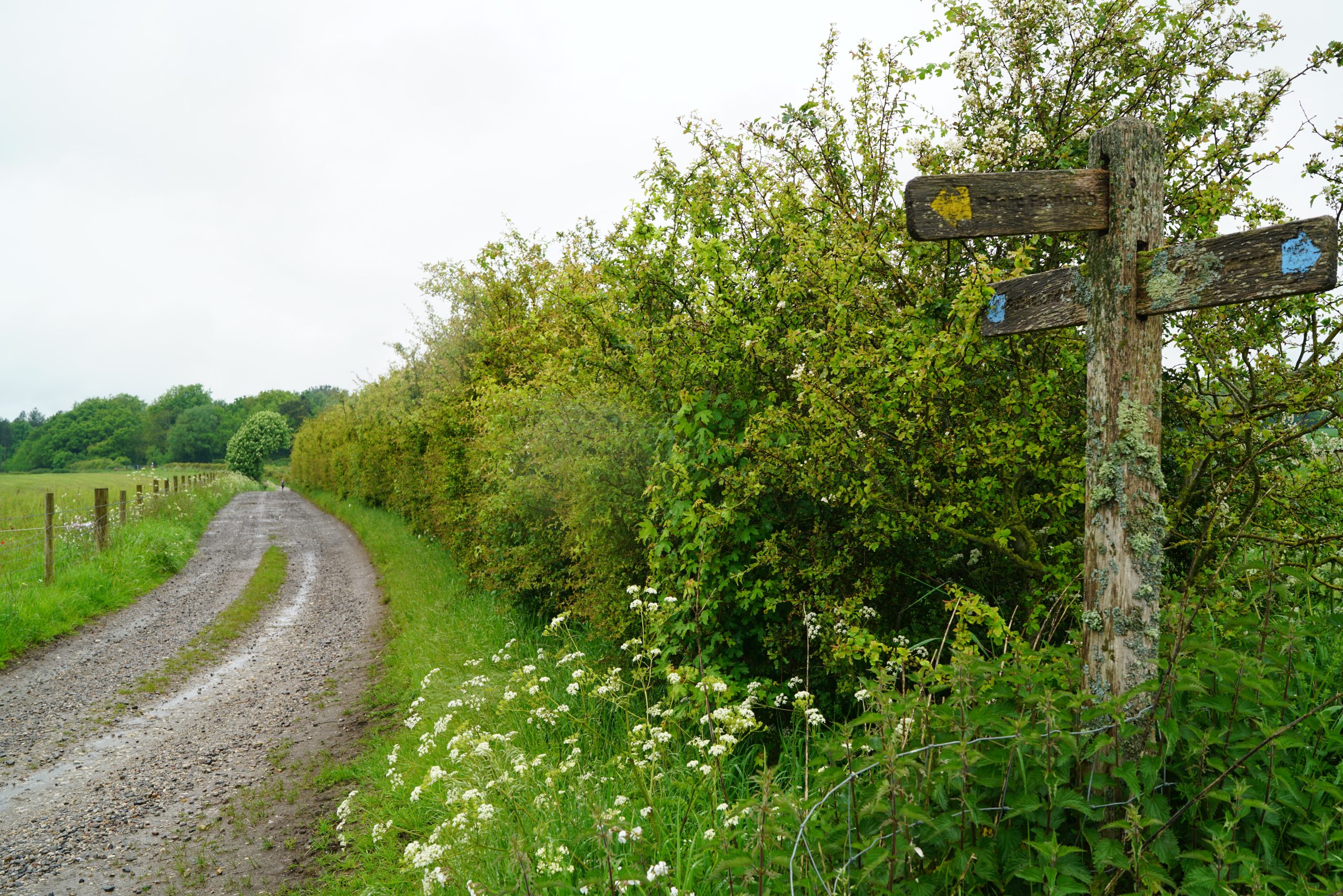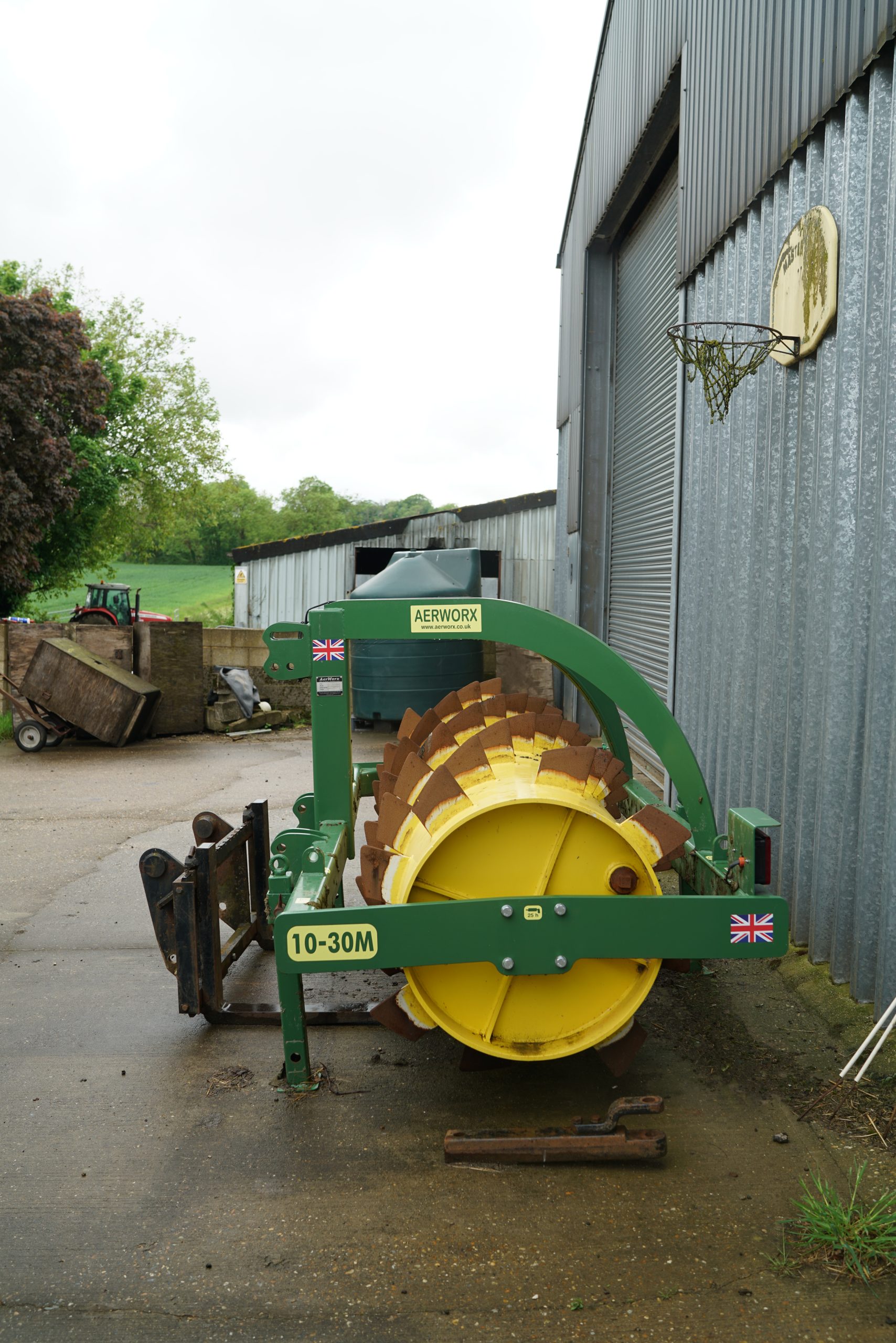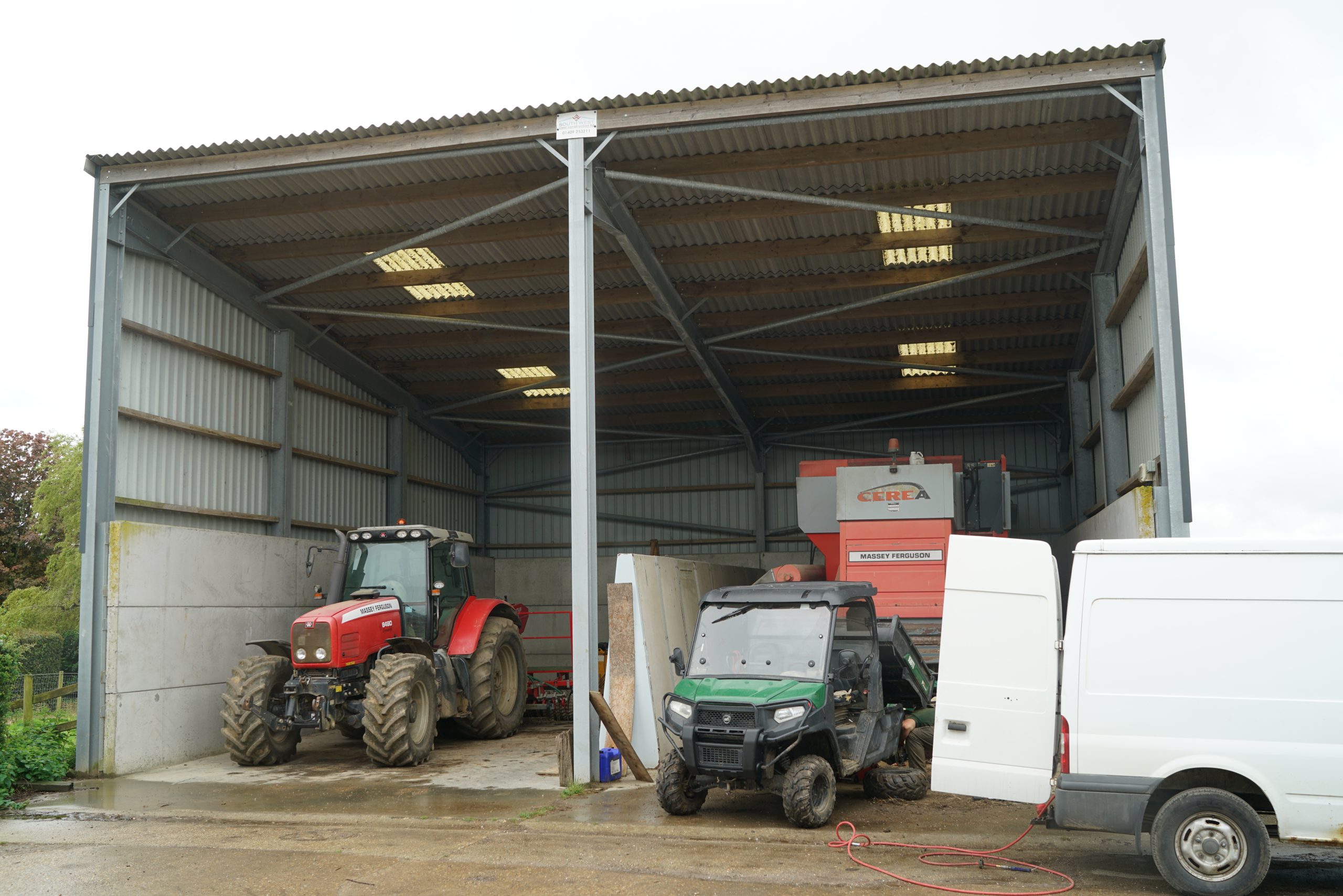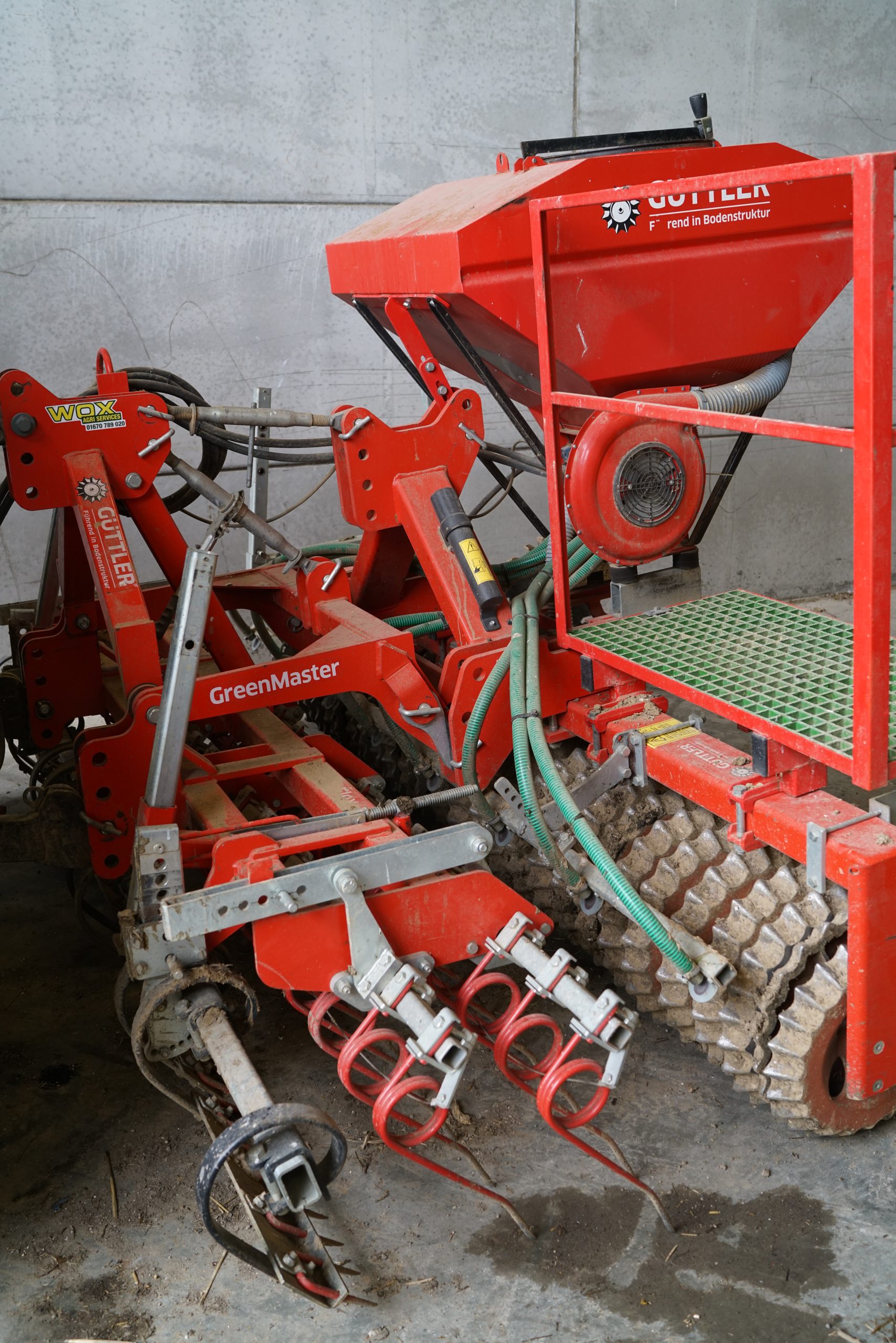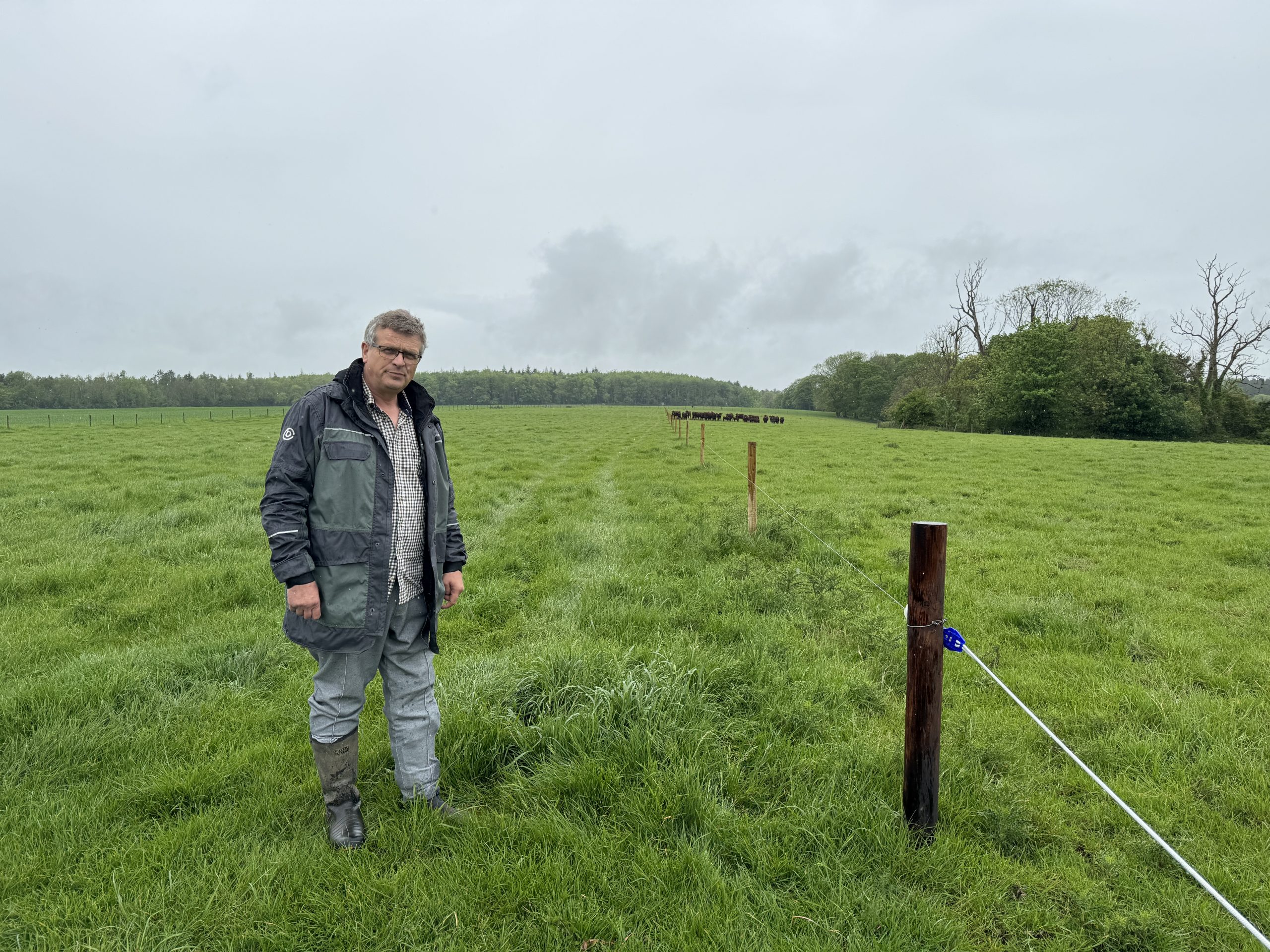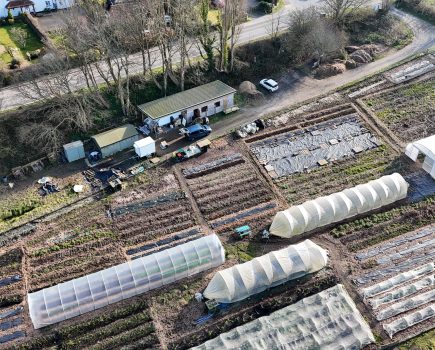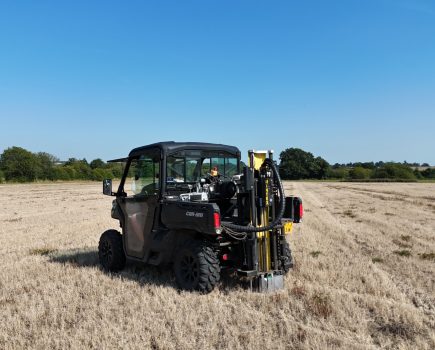This month Nigel visits James Seller, a fourth-generation mixed beef and arable tenant farmer at Park Farm in Arundel, West Sussex, to find out more about his farming business and his move to more regenerative agriculture practices over the past couple of years.
Turning off the busy A27 down a concrete drive signposted Park Farm, the first thing I notice as I approach the farm is the imposing flint barn to my right which has clearly been converted into business units by the Norfolk Estate. I take the left-hand entrance and arrive in the farmyard, parking up opposite a beautiful old flint farmhouse. James greets me at the front door and invites me in for coffee and a chat at the kitchen table.
He and his wife Helen are Agricultural Holdings Act tenants of the Norfolk Estate and the fourth generation to farm at Park Farm. His great grandfather Samuel and grandfather Will came to the farm in 1922 before his father John took over 1962. After studying Agriculture at Newcastle, James returned to the farm in 1985, working alongside his father until he died in 2019.
Today the family business comprises three main enterprises; arable, which accounts for just over two thirds of the 148 hectares, and another 40 hectares split evenly between a suckler herd of Sussex cows, introduced in 2014, and a well-established horse livery business set up in the 1990s.
The land, which is just inside the South Downs National Park, is predominantly grade 3 flinty clay soils over chalk, said James. Much of the farm is exposed, he added, with far-reaching views of the south coast from the top of the farm.
He explained that his grandfather, like so many, spent much of the thirties removing hedgerows because of the cost of labour needed to maintain them by hand, and he has spent the past 13 years reinstating them, with the help of Colin Hedley and the National Park rangers.
Regen Ag
In the past couple of years James, who turns 60 this year, has started transitioning to regenerative agriculture.
“I’m enjoying my farming more than ever,” he said, adding he felt that ‘regen ag’ was more of an ethos than a set of rules or standards.
He acknowledged that a lot of the principles have come from the organic movement but said the answers are unique to each farming unit, making certification difficult. Regen, he said, sits between organic and conventional agriculture. Where, depends on you and your farm.
At Park Farm, James has been implementing rotational grazing practices and growing more cover crops on his arable ground to improve his soil health. He’s also been integrating livestock which graze his cover crops, something he thinks the government is keen to encourage arable farmers to do more of through Sustainable Farming Incentive agreements.
The process has been a huge learning curve and James likened the transition to “going back to school”. A key learning resource has been the Precision Grazing (www.precisiongrazing.com) group led by Cornish farmer turned entrepreneur James Daniels.
Daniels founded the business in 2016 to help UK farmers implement and manage their grazing systems. He helped James draw up a grazing plan for his farm and, after receiving a Farming in Protected Landscapes (FiPL) grant through the South Downs National Park, James purchased Kiwitech electric fencing and water infrastructure, sourced via the www.progressivefarming.co.uk website.
The group’s annual subscription includes monthly webinars, farm walks, a two-day on farm conference and access to the Precision Grazing WhatsApp group that has been “an invaluable tool” for farmer members to ask questions and post updates.
After installing all the infrastructure, James spent last year learning the system. He moved his main spring calving group of 26 cows and followers to a fresh paddock every six days on average.
This year he plans to target three-day moves to prevent his cattle grazing any regrowth, which he believes will yield better results. He also hopes to increase the size of his familial groups, making management less arduous.
James is also a member of the South Downs Pasture and Profit in Protected Landscapes programme (isabella@pastureforlife.org) led by Ali Laws and Isabella Goggin, which started up last year. He said it’s been useful to have a group on his doorstep for farm visits and has helped build community among like-minded farmers in the National Park.
In the future James would like to become Pasture For Life certified and believes his Sussex cattle are ideally suited to finish off grass or cover crops. At present he feeds a bit of concentrates in the last two or three months to add a bit of finish, before taking them to Hailsham Market. He aims to finish his cattle at between 19 and 24 months, averaging a live weight of around 560kg, and they tend to be bought by local butchers who favour the local breed, he said.
Arable and integrating livestock back into the arable rotation
All the arable work is carried out in house, including the combining, said James. He trialed working with a contractor back in the nineties for a few years but ultimately decided there wasn’t enough margin in it, as a tenant, so decided to retool with cost-effective, second-hand kit and hasn’t looked back.
He has moved away from spring crops like barley and beans and now focuses on a mix of winter cereals such as wheat and oats, and cover crops, finding them more reliable and profitable.
Southern Water pays him £135 per hectare to grow cover crops as part of its nitrate scheme to improve water quality. They tend to go in after harvesting winter cereals to improve soil heath and keep a living root in the soil over the winter. The crop also provides fodder for cattle to graze from mid-January to mid-March, allowing James to protect his permanent pasture for grazing in drier weather.
Historically they used a plough and power harrow for all cultivations, but in recent years have switched to a low-disturbance subsoiler that lifts the soil 8 inches to allow air into the ground followed by discs to prepare a good seedbed for their Weaving tine drill.
This last autumn James decided to plough a large area to deal with a grass-weed problem, taking advantage of a good autumn window, but otherwise he aims to turn the soil as little as possible.
Yields on his wheats tend to average around nine tonnes to the hectare, though he admitted last year’s harvest was somewhat below that.
Arun to Adur Farmers Group
James is one of 20 farmers who make up the Arun to Adur Farmers’ Group. The group is a voluntary initiative set up by Colin Hedley in 2015 and covers nearly 11,000 hectares of the chalk downs between the two rivers. The group’s collective work delivers coordinated conservation benefits on a landscape scale.
Cluster group officer Tammy Harris organises farm walks, social events with young farmers and training sessions. A recent event involved farmers going out with a local bird recording group to learn more about “the little brown jobs” on their farms, which James said was a fascinating learning experience.
The group also participates in the Big Farmland Bird Count, an annual bird survey, and Open Farm Sunday, a great opportunity to engage with the public, he said. The events are popular, added James, who spends time answering questions during tractor and trailer rides on the South Downs.
Environmental work
I asked James what he loved most about his job? “Improving the environment; farming can be part of it,” he replied.
As a mixed farm it has always been a haven for wildlife, he said, but he’s noticed a marked increase in the number of birds and biodiversity since carrying out more Countryside Stewardship-funded environmental work on the farm.
They have planted over 1.5km of new hedgerows over the past 12 years and are now beginning to lay some of the older hedges, work that is carried out by Colin Hedley in return for the Countryside Stewardship capital grant payment, he explained.
As we drove around the farm, James pointed out some of the new hedges the National Park rangers have also been laying. We saw a group of yearling cattle grazing a cover crop with a fenced off wildflower strip full of flowers. Flying overhead were skylarks, and James pointed out several yellowhammers.
James is also keen to reduce the amount of artificial nitrogen he applies to his land and pointed out a large field of AB15, a two-year agreement to provide habitat for wildlife and fix nitrogen. He has also experimented with foliar nitrogen application to feed the leaves rather than the soil.
Another environmental project James mentioned was a block of 12 hectares over the hill owned by the county council. It’s an important habitat and home to the Duke of Burgundy butterfly. To help manage it, James takes a group of his dry cows there from July to September to carry out conservation grazing.
Diversification
James runs a horse livery which he set up on 20 hectares of the farm in the early nineties. The business employs a horse livery manager, Vicki Stock, and represents a vital non-farming income stream, accounting for nearly 35% of their income.
More recently James looked into setting up a paw paddock on the farm for dog walkers, which he said could potentially bring in £25,000 a year, but after seeking planning advice decided against it because of potential highway access concerns.
Plans for the future
James plans to continue working towards Pasture for Life certification for his beef production, making better use of his cover crops to finish cattle over winter and achieve a larger frame, he said.
He is also keen to experiment with not weaning calves and running larger family groups to simplify herd management. This, he feels, will allow him to achieve a better work/life balance. Outside farming both he and his wife are keen motorcyclists, and he said a big part of going regen was the opportunity to have more time away from the farm to expand his farming horizon and see more of his family.
Farm facts
- 148 hectares (366 acres) – mostly grade 3 soils (flinty clay over chalk)
- Two thirds of land down to arable cropping, with remaining third split between permanent pasture for cattle and livery horses
- Conservation grazing on 12 hectares of county council owned land managed as Duke of Burgundy butterfly habitat
- In Countryside Stewardship and in the process of transitioning to Sustainable Farming Incentive
- Grows Southern Water cover crops
- Has planted 1.5km of hedges (replacing all those his grandfather took out in the 1930s). Also regularly lays hedges.
- Herd of 30 Sussex cows (with around 90 cattle at any one time on the farm)
- Fattens all steers and heifers not kept as replacements and sells via Hailsham Market
- Arable work all done in house
- Member of the Arun to Adur Farmers’ Group
- FiPL grant for an aerator and electric fencing and water infrastructure
- Part of South Downs Pasture and Profit in Protected Landscapes – which started in 2023
- Income breakdown over past five years: cattle 5% to 10%, arable 40% to 50%, livery 25% to 35%, BPS dropping 19% to 11%, environmental 5%, house let 5%.
- default
- default
- default
- default
- James Seller

